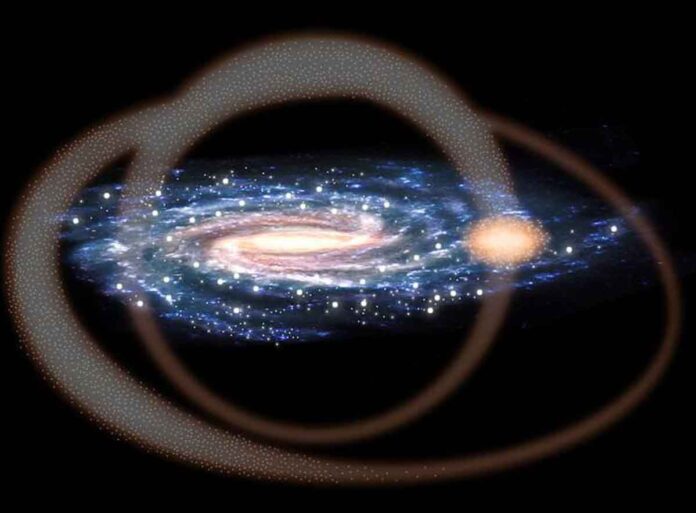Maser emissions, or “cosmic lasers,” are produced by amplification of stimulated emissions in the interstellar and circumstellar medium. Bright and compact maser sources are ideal targets for high-accuracy astrometry in the study of the Milky Way’s kinematics.
A team from the Chinese Academy of Sciences’ National Time Service Center (NTSC) conducted a 22 GHz water maser survey of O-rich asymptotic giant branch (AGB) stars in the Sagittarius stellar stream. 21 maser emissions were discovered using the Nobeyama 45-m and Tidbinbilla DSS-43 70-m telescopes, 20 of which were discovered for the first time.
On September 9, the findings were published in the Monthly Notices of the Royal Astronomical Society.
The Sagittarius Stellar Stream is the most prominent stellar stream in the Milky Way, and it is caused by our Galaxy’s accretion and mergers with its satellite dwarf galaxy, the Sagittarius Dwarf Spheroidal Galaxy.
“Investigation of this stream could assist scientists in probing galactic evolution and dark matter distribution,” said Prof. Wu Yuanwei, team leader.
The researchers looked at the Galactic distributions of H2O and SiO maser-traced AGBs in the Sagittarius orbital plane and discovered an elongated structure in the (l, b) (340°, 40°) direction.
They studied the 3D motions of these sources to confirm the link between masers and the Sagittarius tidal stream. The results indicated that these sources are still from the Milky Way’s thick disc, with an outward motion velocity of 50 km s-1 away from the Galactic centre.
“Maser emissions must exist in the Sagittarius stream. The reason we can’t confirm masers in the Sagittarius stream is due to the sensitivity of our survey and sample bias “Prof. Wu stated “In the future, we’ll test more samples.”

